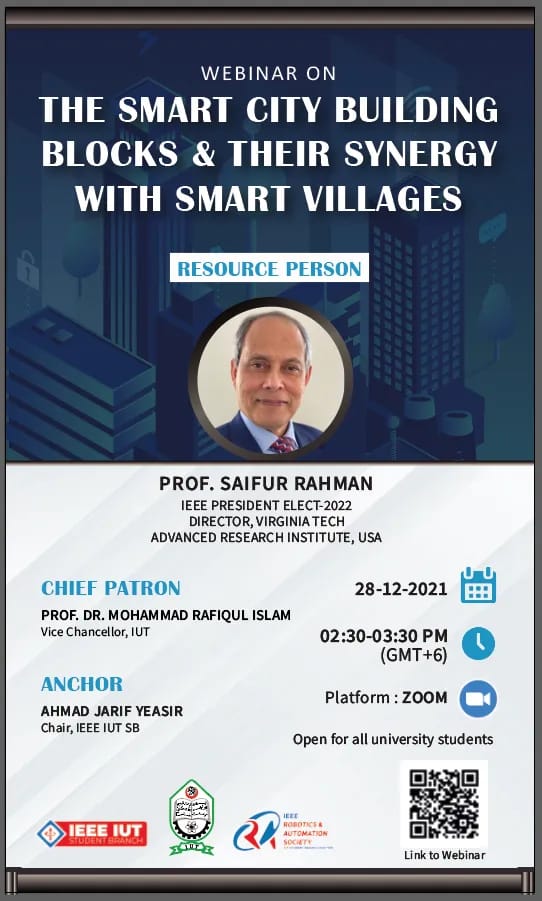The Smart City Building Blocks and Their Synergy with Smart Villages
What can smart cities and smart villages learn from each other
Saifur Rahman, PhD
Joseph Loring Professor of electrical engineering
Virginia Tech Advanced Research Institute, USA
IEEE President-elect 2022
Webinar on "The Smart City Building Blocks and Their Synergy with Smart Villages"
Webinar on "The Smart City Building Blocks and Their Synergy with Smart Villages"The opening ceremony of Industrial Training of EEE DepartmentHuawei seeds for the future 2021: Students of EEE selectedIndustrial Training of the Students of EEE Department, Islamic University of Technology (IUT) CompletedShort course on Next-generation Cellular Communications: 5G and its Transition to 6GShort Course on "Flexible Electronics: Present Status, Key Challenges, and Future Opportunities for IoT & Biomedical Applications"Short Course on "Application of AI in Sustainable Energy Transition for Thriving Towards a Smart Society"

A smart city relies on widely distributed smart devices to monitor the urban environment in real-time, collects information for intelligent decision making, and facilitates various services to improve the quality of urban living. The distributed network of intelligent sensor nodes, as well as data centers/clouds where sensor data are stored and shared, constitutes a smart city infrastructure. Participatory sensing plays an indispensable role in emerging initiatives of a smart city, which retrieves sensor data from groups of people or communities. The proliferation of personal mobile devices and the development of online social networks make participatory sensing viable at a large scale but introduce many open problems at the same time. Smart cities address urban challenges such as pollution, energy efficiency, security, parking, traffic, transportation, and others by utilizing advanced technologies in data gathering and communications interconnectivity via the Internet. It provides real-time and remote monitoring for different aspects of data management in areas such as transportation, communication, video surveillance, and sensors distributed throughout the city. Simultaneously, the Smart City building blocks like education, telemedicine, health care, IT applications, pollution management, etc. can be deployed in Smart Village initiatives to have a greater impact on the rural population throughout the world. This will support the world’s energy-impoverished communities by providing a comprehensive solution combining renewable energy, community-based education, and entrepreneurial opportunities through reliable electricity and internet connectivity.

